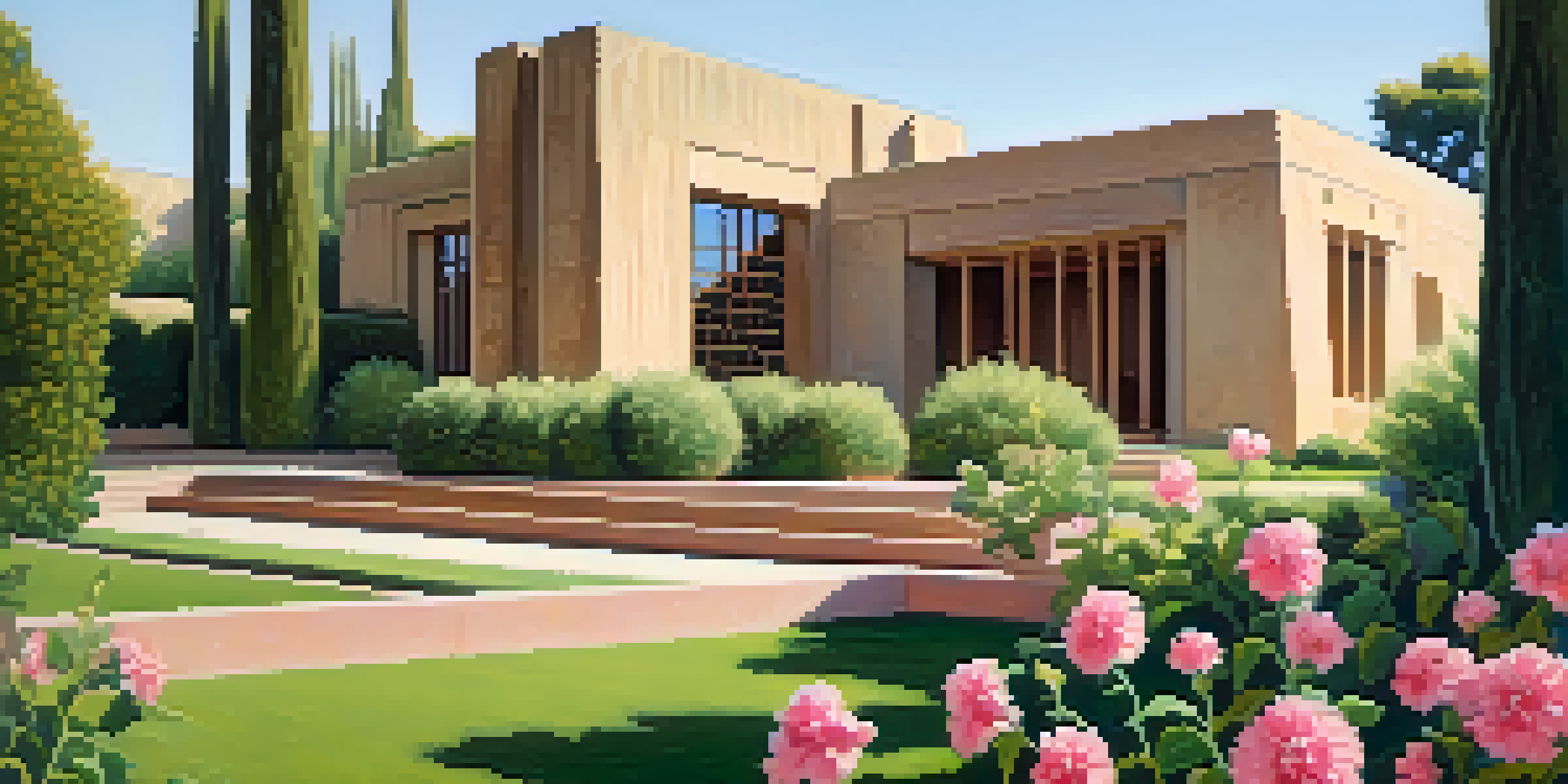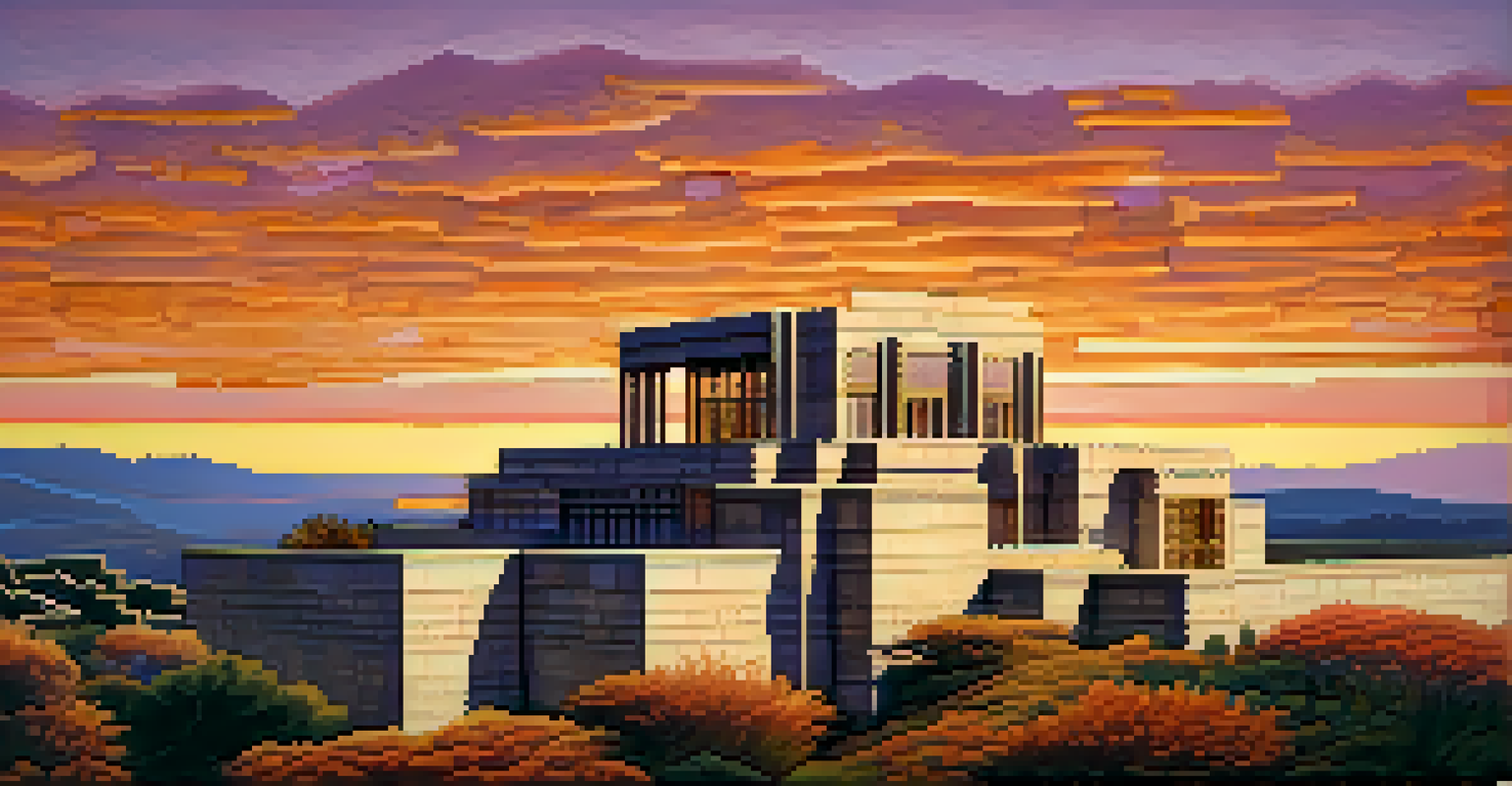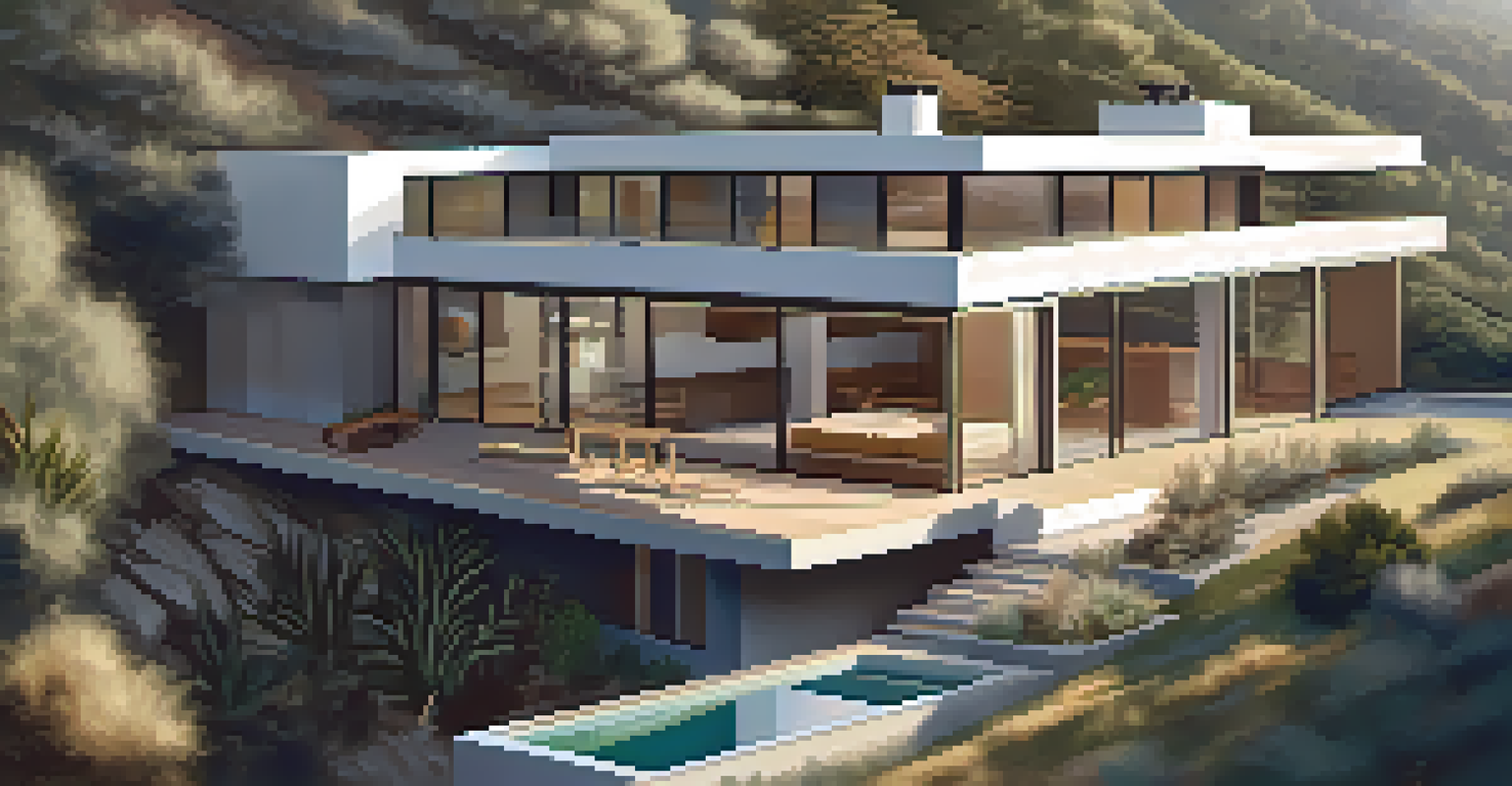The Artistic Vision of Frank Lloyd Wright in Los Angeles

Understanding Frank Lloyd Wright's Design Philosophy
Frank Lloyd Wright was more than just an architect; he was a visionary. His design philosophy, known as 'organic architecture,' emphasizes harmony between human habitation and the natural world. This meant that buildings should blend seamlessly into their surroundings, rather than dominate them. For Wright, architecture was a way to enhance the experience of life itself, creating spaces that inspired and rejuvenated.
The mother art is architecture. Without an architecture of our own, we have no soul of our own civilization.
In Los Angeles, this philosophy took on a unique flavor, influenced by the region's diverse landscapes and lifestyle. Wright believed that architecture should reflect the local culture, and in LA, he found a canvas rich with opportunities. His designs often incorporated local materials and took advantage of the region's natural light, creating structures that felt both innovative and grounded.
Wright's approach to design was revolutionary, pushing boundaries while remaining deeply respectful of the environment. His ability to envision structures that celebrated both form and function has left a lasting impact on architecture, particularly in a city as vibrant as Los Angeles.
Wright's Iconic Structures in Los Angeles
Los Angeles is home to several of Wright's most iconic works, each reflecting his distinctive style. The Hollyhock House, completed in 1921, is a prime example of his ability to integrate architecture with nature. Built for oil heiress Aline Barnsdall, the house features a unique design inspired by the shapes of the hollyhock flower, showcasing Wright's commitment to organic forms.

Another noteworthy structure is the Ennis House, constructed in 1924, which is famous for its textile block design. This innovative construction method not only provided aesthetic appeal but also enhanced the home’s thermal efficiency. The Ennis House has become a cultural icon, appearing in numerous films and television shows, which further solidified Wright's influence in the realm of visual art.
Wright's Organic Architecture Philosophy
Frank Lloyd Wright's design philosophy emphasizes harmony between buildings and their natural surroundings, enhancing the human experience.
Wright's work in Los Angeles isn't just about aesthetics; it speaks to a deeper connection with the environment and a sense of place. Each building tells a story, reflecting the aspirations and lifestyles of the people who inhabit them, while also honoring the landscape of Southern California.
The Influence of California's Landscape on Wright's Work
California's diverse landscapes provided a rich source of inspiration for Frank Lloyd Wright. The state's mountains, beaches, and deserts influenced his designs, encouraging him to create buildings that complemented their surroundings. For instance, the use of natural materials like wood and stone in his structures echoes the textures found in California's scenery, creating a sense of unity between the built and natural environments.
Space is the breath of art.
Wright's understanding of the Southern California climate also played a crucial role in his architectural choices. He designed homes with large overhangs and open floor plans to maximize airflow and natural light, allowing residents to enjoy the outdoor beauty while remaining comfortable indoors. This seamless integration of indoor and outdoor spaces was revolutionary at the time and remains a hallmark of modern architecture.
Ultimately, Wright's appreciation for California's landscape shaped not only his buildings but also the way people experienced their homes. By blurring the lines between interior and exterior, he fostered a lifestyle that embraced nature, encouraging inhabitants to connect with the environment around them.
Wright's Collaboration with Clients and Communities
One of the hallmarks of Wright's approach was his collaborative spirit. He believed in working closely with his clients to ensure that their needs and desires were at the forefront of his designs. This partnership often led to innovative solutions that perfectly captured the essence of the client's vision and the surrounding environment. In Los Angeles, this collaborative approach was particularly evident in projects like the Storer House, which was designed to reflect the lifestyle of its owners.
Wright also had a keen interest in engaging with the communities in which he built. He often sought input from local residents and incorporated their feedback into his designs. This commitment to community engagement not only enriched his work but also fostered a sense of ownership among those who lived and worked in the spaces he created.
Iconic Structures in Los Angeles
Wright's iconic designs, like the Hollyhock House and Ennis House, showcase his unique ability to integrate architecture with the environment.
Through collaboration, Wright was able to create architecture that resonated deeply with its users. His ability to listen and adapt his designs to meet the needs of individuals and communities resulted in buildings that were not just structures, but true extensions of the people they housed.
The Legacy of Frank Lloyd Wright in Los Angeles
The legacy of Frank Lloyd Wright in Los Angeles is both profound and enduring. His innovative designs have influenced countless architects and continue to inspire modern architectural practices. Many of his buildings are now recognized as historic landmarks, celebrated for their unique contributions to the city’s architectural identity. They serve as a testament to Wright’s visionary thinking and his ability to push the boundaries of design.
Wright's emphasis on organic architecture has left a lasting imprint on the region's aesthetic, encouraging a focus on sustainability and harmony with nature. In an era where environmental concerns are at the forefront of global discussions, Wright's ideas about the relationship between architecture and the natural world are more relevant than ever.
Visitors to Los Angeles can experience Wright's legacy firsthand by exploring his buildings, which offer a glimpse into his creative genius. From the intricate details of the Hollyhock House to the grand scale of the Ennis House, his works invite us to reflect on how architecture can enhance our lives and connect us with our environment.
Wright's Impact on Modern Architecture
Frank Lloyd Wright's influence on modern architecture extends far beyond his own designs. His innovative concepts, such as open floor plans and the integration of natural elements, have become staples in contemporary architecture. As architects today continue to seek ways to create spaces that foster connection and well-being, they often draw inspiration from Wright's pioneering work.
In Los Angeles, this impact is particularly visible, as many architects strive to create homes that embrace the region's unique climate and culture. The principles of transparency and fluidity in design can be traced back to Wright, who championed spaces that promote interaction between residents and their environment. His legacy is evident in the way modern homes often feature large windows and outdoor living areas.
Enduring Legacy in Modern Design
Wright's innovative concepts continue to influence contemporary architecture, promoting sustainability and a connection with nature.
Ultimately, Wright's vision has paved the way for a more holistic approach to architecture, one that prioritizes sustainability and the human experience. His ability to blend functionality with beauty continues to inspire architects and designers, ensuring that his artistic vision remains alive and well in the world of modern architecture.
Visiting Wright's Architectural Marvels in LA
For those looking to explore the artistic vision of Frank Lloyd Wright in Los Angeles, there are several must-see locations. The Hollyhock House, now a UNESCO World Heritage site, offers guided tours that delve into its history and design. Visitors can appreciate the intricate details of the house while learning about Wright's innovative use of space and light.
Another notable site is the Ennis House, which stands as a striking example of Wright's textile block designs. While the house is not always open to the public, special tours and events occasionally allow visitors to step inside this architectural gem. Standing in front of the Ennis House, one can truly appreciate how it harmonizes with its surroundings, embodying Wright's philosophy of organic architecture.

Lastly, the Storer House, located in the Hollywood Hills, is another fascinating destination. While private, it is often featured in architectural tours that celebrate Wright's work in the city. Exploring these sites not only offers a glimpse into Wright's genius but also invites us to reflect on the profound impact of architecture on our lives.